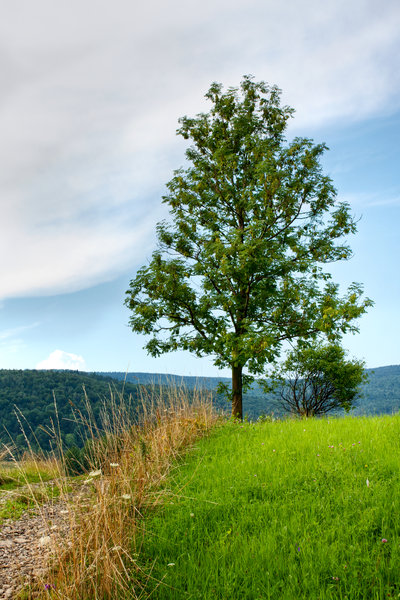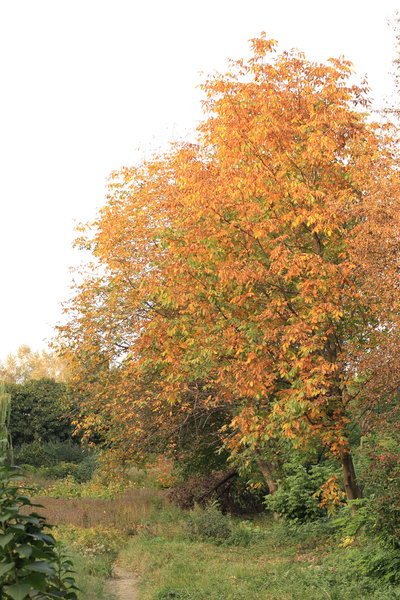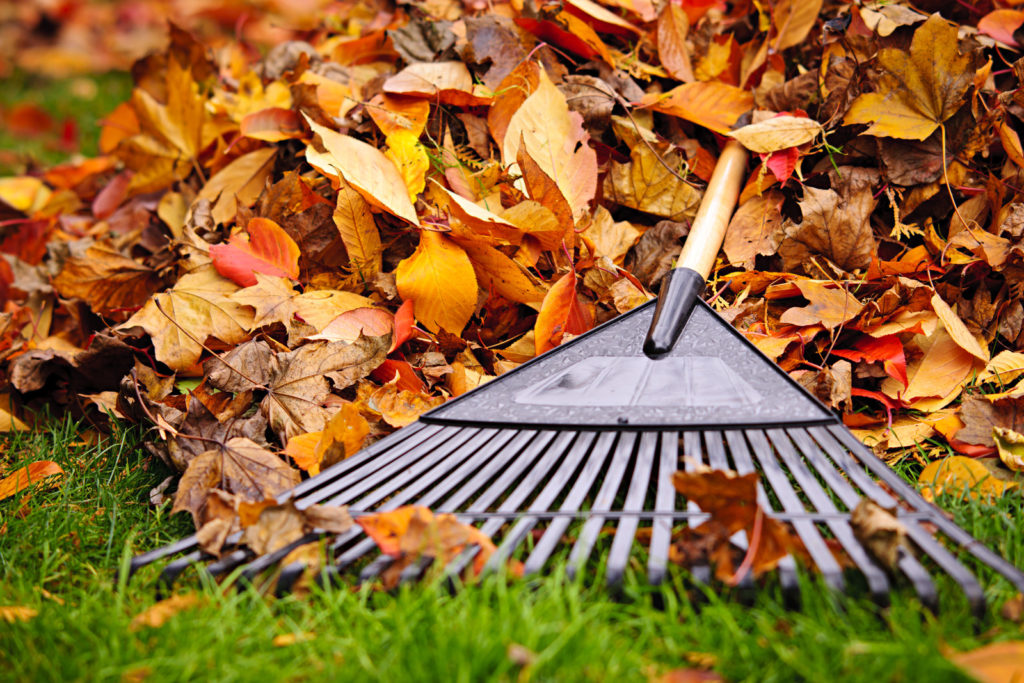Fall is a beautiful time of the year. Amazing colors on the trees everywhere. Then, the leaves start falling and it’s leaves everywhere that now you need to get rid of them. What to do with the leaves? We can make piles of them but what other options are there? Can you compost leaves? You sure can. Let’s take a look at how to compost leaves and which leaves you can compost.
Generally speaking, as brown compost, leaves are a great source of carbon and nitrogen for your compost, some more than others. However, if you’ve ever walked in the woods, you know that they can take a while to break down. There are a few things we can do to help move things along.
How to Compost Leaves
Like so many things that we compost, the smaller the pieces of leaves, the better and faster they will compost. While you can throw whole leaves into your compost pile, they are going to take quite some time to break down, and they also have a tendency to mat. You’ve probably seen matted leaves below trees where you didn’t rake or on the forest floor. Matting is when leaves, usually moist, form a solid layer. This layer will block air and other nutrients, which prevents the decomposition of other materials, leading to anaerobic decomposition.
To help things along, we want to break them up first.
Smaller items give the microbes that help with composting a bigger surface area to work on so they can break up faster. Think of it a bit like this: if you and your friends all try to share a whole pizza without cutting it up, it will take a while as you get in each other’s way (and make a mess). If you slice up the pizza first, you can each work on your part and eat it faster (and probably save on laundry costs too).
An easy way to do this is to run your lawnmower over them. With a bag attachment, a lawnmower does a great job of cutting up the leaves, collecting them, and packaging them so that you can add them to your compost pile. If you happen to get some grass cuttings in there, even better! You want to ensure you mix in all those leaves with some green materials anyway. As a rule of thumb, about a four-to-one ratio is a good start (four parts browns to one part greens), so if you have a lot of leaves you want a good amount of green compost to go with them.
You can also use a leaf mulcher if you don’t have a lawnmower. The same principle applies. You want to break the leaves into smaller pieces to cut down the time it takes to compost the leaves.
Make sure to periodically turn your compost to get air, moisture, and heat spread around throughout your compost pile. This is particularly important with leaves because wet leaves will block air from penetrating them so turning is necessary to properly spread out the key composting ingredients.
If you’re just starting your compost pile, consider helping it get started. Add some compost to the pile or a compost accelerator. These contain the microorganisms that you want to grow for composting and will help you get a jumpstart.
You also want to make sure to keep your compost pile moist. The important part here is moist but not wet. It should be about the consistency of a wrung-out sponge. It can slow composting and turn moldy if you get it too wet. If it does get too wet, consider adding more browns to absorb some of the moisture.
With composting, not all leaves are created equal. Leaves of different trees have a different make-up. Some compost faster and some add more nutrients than others. Also, some, like we see with pine needles (no, they’re not leaves but you get the idea) are more acidic than others so you want to be a bit more careful adding too many of those.
Generally speaking, leaves are a good addition to compost. Everything is in moderation, but some trees are more nutrient-rich than others. Here’s some guidance to help you out.

Leaves That You Want to Add to Your Compost
Several trees are better options for producing leaves that compost well. Their leaves tend to produce more nutrients in the compost. They have the added bonus that the structure of their leaves tends to compost more quickly.
These leaves include:
- Ash
- Birch
- Cherry
- Cottonwood
- Fruit Trees
- Maple
- Poplar
- Willow
When you have a choice, these are the leaves that you want to compost.
Leaves to Be Careful Of in Your Compost
You may want to be careful with leaves from the mighty oak tree. Add them in moderation. They don’t compost as well. They also tend to be more acidic and so if you have too many of them, it can throw the pH of your compost off. Generally, oak leaves should be no more than 20% of your compost pile.
Additionally, go easy on beech, sweet chestnut, and holly leaves. These leaves (including the oak) are all high in lignin. This makes their leaves more sturdy, and it takes longer to compost. This, combined with a lower carbon and nitrogen concentration, makes them less than ideal for taking up time and space in your compost pile.

Some Leaves You May Not Want to Compost
There are a few types of trees whose leaves you want to avoid in your compost altogether. They include
- Walnut and Eucalyptus – These produce toxins that can harm plants and prevent seeds from germinating (not exactly a good quality in something you add to your garden.
- Horse Chestnut and Buckeye – These produce a toxin that is harmful to humans and other animals if in sufficient quantities. Generally, the toxin is in their nuts, but it is best to keep it away from your garden, kids, and pets.
How Long Does It Take to Compost Leaves?
If you create a pile of leaves and let them compost, even with greens added, it could take several years, depending on the type of tree and the conditions. So, this may not be the best strategy for your compost pile.
If you cut them up using a lawnmower or leaf mulcher, then you usually cut that time down to a few months. Leaves are a bit of a special case because you typically compost leaves starting in the Fall and the composting process slows down as it gets colder. Therefore, most of the work will be done as the Spring hits. Either way, with the right conditions in summertime, you can typically have nutrient-rich compost for your garden or flower bed.
Another Option Instead of Composting Leaves
If composting isn’t your thing and you want a slightly easier solution, you can create leaf mold. Leaf mold is what’s left over after moist leaves decompose. If you’ve ever kicked through a pile of leaves and seen the dark, soil-like material at the bottom (often where insects like to crawl about), you’ve seen leaf mold.
Leaf mold doesn’t have the nutrient value of good compost, but it does make a good mulch which keeps weeds out. It’s also easier to make.
Making Leaf Mold
Making leaf mold is easy. You make a pile of leaves, get them wet and wait. You can keep them wet to help them decompose further. You can do this in a pile in your yard or add them to a garbage bag, cut slits in the garbage bag and periodically add water as they dry out. That’s it!
Adding Leaves to Compost
You can compost leaves, which are a great addition, especially if you have the right trees. They are plentiful, add carbos and nitrogen to your compost and they’re easy to compost.
If that’s too much work, or you have too many leaves, consider making some leaf mold and using it as a mulch. It’s easy to make and does add some nutrients back into the soil, though not as much as compost.
